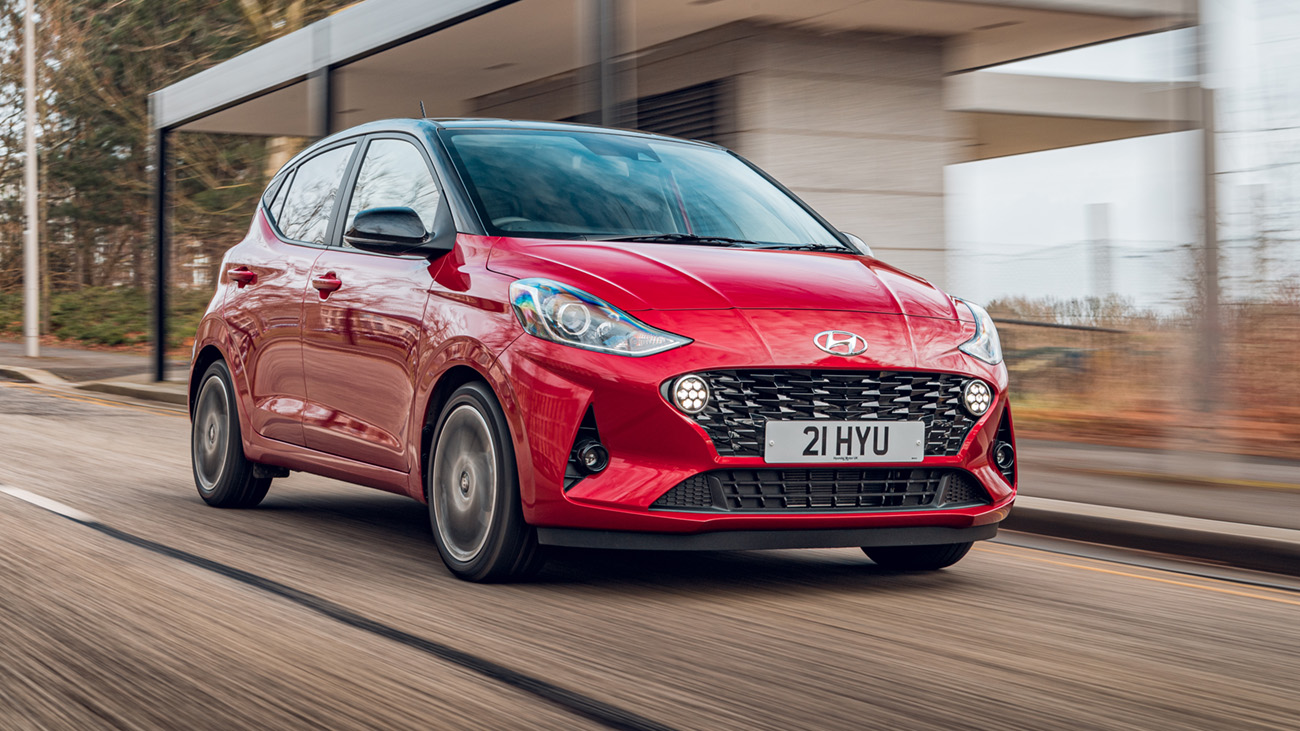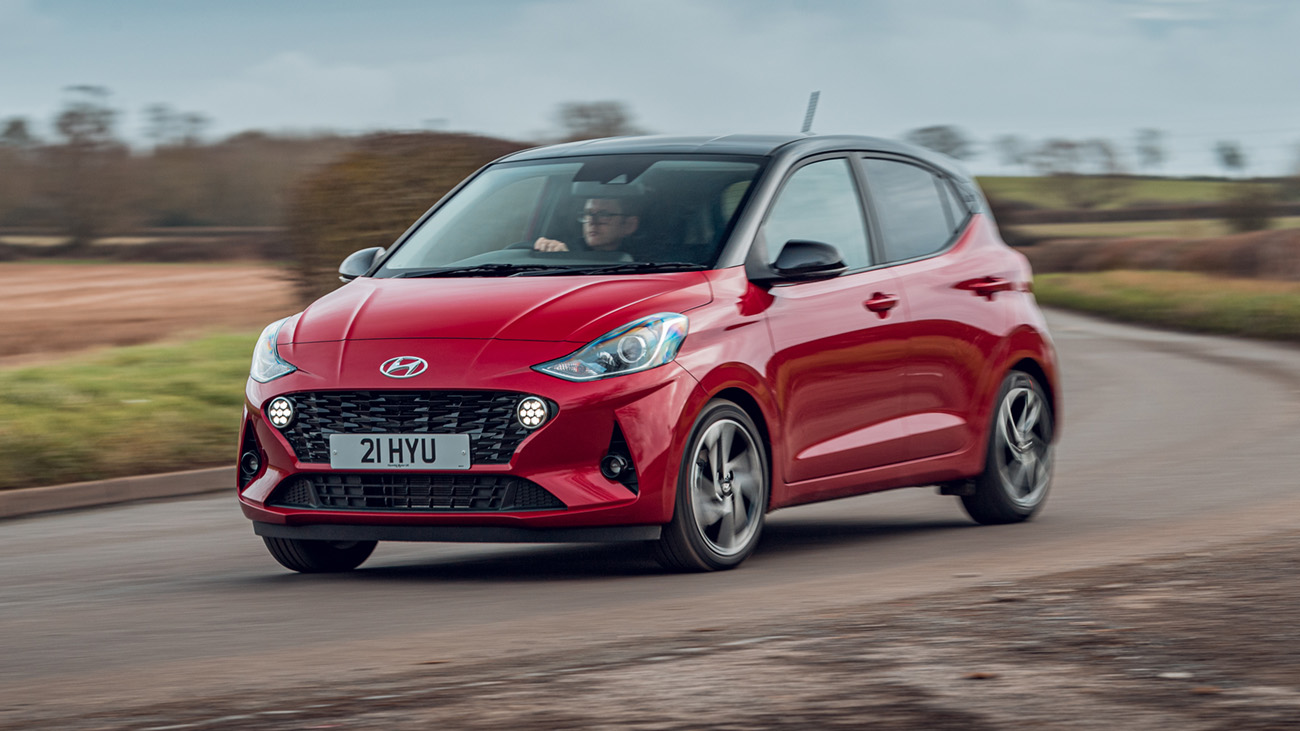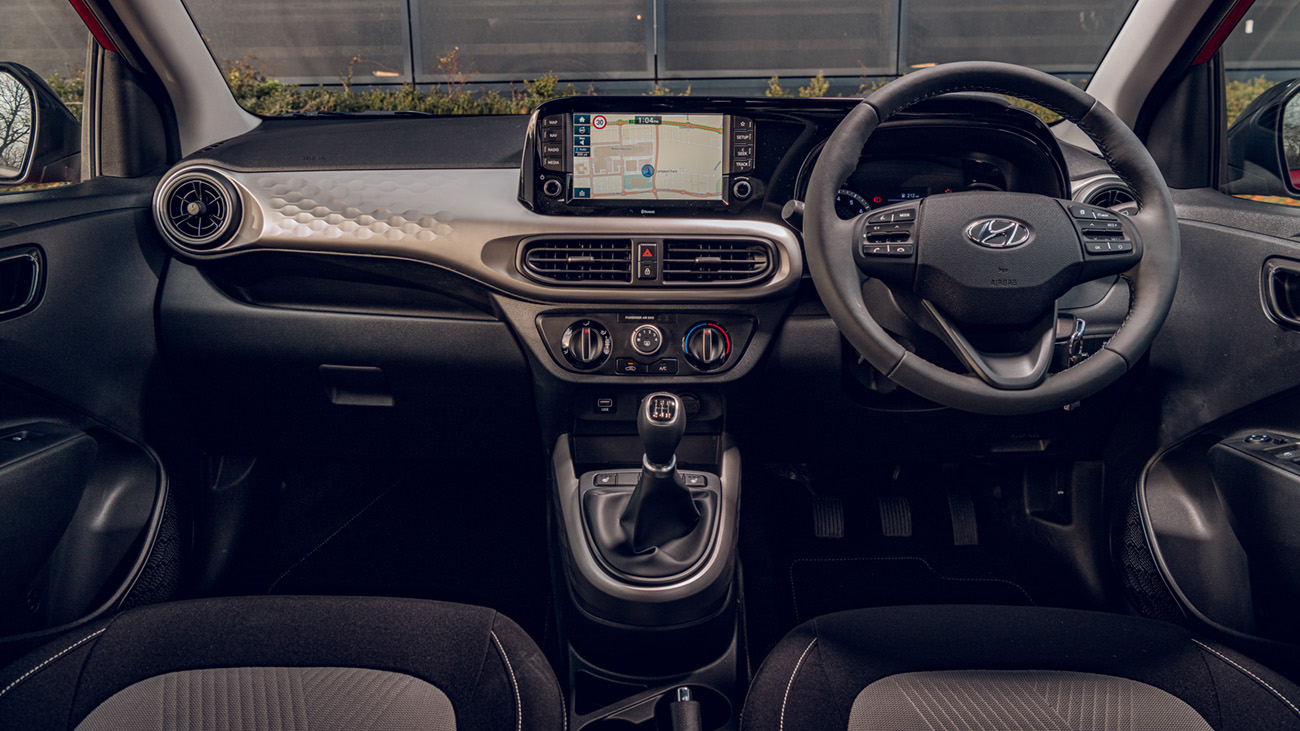
Driving
What is it like to drive?
The fastest Hyundai i10 does 0-62mph in 12.6 seconds, which is very, very slow indeed. It uses a naturally aspirated 1.2-litre four-cylinder petrol engine with 83bhp and 87lb ft of torque, driving the front wheels through a five-speed manual gearbox. Alternatively, if you don’t mind being late for literally everything, you could save yourself £500 and go for the 67bhp 1.0-litre three-cylinder petrol, which has just 71lb ft of torque and at best offers 0–62mph in 14.6 seconds.
What are the engines like?
The new i10 might sit on an all-new platform, but both engines are carried over from the old car. And you know what? They’re absolutely fine. There's a more powerful, 1.0-litre turbocharged petrol generating 99bhp available in N Line trim, but the 1.2’s 82bhp just about does the job. Assuming you’re not in too much of a rush. The lack of a little turbo means you have to use all the revs pretty much all the time and work the five-speed manual gearbox like you mean it, but it hums along nicely in town and is even pretty civilised at motorway speeds (which admittedly take some time to reach).
The entry-level 1.0-litre might be down on power, and take two seconds longer to reach 62mph, but around town it doesn’t feel that much slower than the 1.2. It’s on the motorway and in the country where the deficit is most obvious. You drive it the same as the 1.2, by chasing and maintaining momentum at all costs, but be prepared to shift down frequently to build up speed. Sounds good though, in a semi-skimmed 911 kind of way.
A little car like the i10 really ought to have a three-cylinder of some description – this is a more characterful engine than the 1.2, and despite the lack of power, the one we’d be tempted to go for if we never ever ventured beyond city limits. For most people though, the 1.2 is the more versatile option – it’s only a £800 premium over the 1.0-litre, and realistically makes precious little difference to claimed fuel economy and CO2 figures.
Is the automatic worth looking at?
The weediest 1.0- and 1.2-litre engines can be specified with an automatic gearbox for another £500 (the N Line's turbo engine is manual only). But rather than a slick twin-clutch, a conventional torque-converter or even a CVT, the i10’s auto box is a five-speed automated manual straight out of the Nineties. Changes frequently come at odd times and are hardly instant – they make your head loll back and forth as power is interrupted and cogs swapped. It makes for significantly less smooth progress than the standard five-speed manual, which is precise despite a long-ish throw and with a progressive clutch pedal learners will find easy to get to grips with.
Oh, and the auto absolutely saps power – both 1.0-litre and 1.2-litre i10s are around three seconds slower to 62mph with the auto than they are with the manuals, making the 1.0-litre car one of the slowest cars on sale in Britain. It takes 17.3 seconds to hit 62mph from zero – you'll get overtaken by continental drift. So yeah – avoid.
The i10 is a very mature little all-rounder. It’s comfortable at any speed, quiet and stable on the motorway and has well weighted, inoffensive steering. We’d quite happily do a long-ish journey in it, no word of a lie. It’s even quite good fun – as you chase momentum and wring the engines out to their respective redlines just to keep pace with traffic. Responsive and agile as you’d hope a city car would be, thanks to light weight, but more refined than you’d expect.
Featured

Trending this week
- Car Review
BMW 1 Series
- Top Gear's Top 9
Nine dreadful bits of 'homeware' made by carmakers






